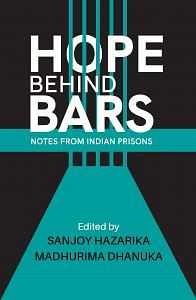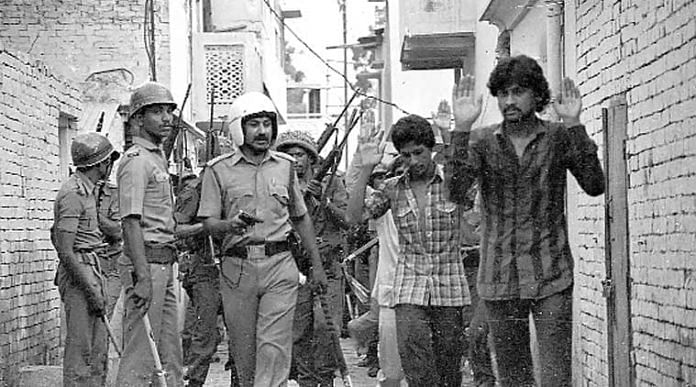Over the years, questions have been raised about the reluctance of the NHRC to exercise its statutory powers, preferring instead to pose as ‘a toothless tiger’. Although the NHRC holds the statutory power to challenge grave injustice, it has intervened legally in very few instances. The Gujarat pogrom against Muslims in 2002 was one such occasion when the NHRC filed a petition before the Supreme Court. The Hashimpura case is another. Recognizing the acquittals as a grave miscarriage of justice, the NHRC impleaded itself in the appeal proceedings, and I represented the NHRC before the Delhi High Court.
The law permits additional evidence to be produced even at the appellate stage in some circumstances. On behalf of the NHRC, I filed an application under Section 391 of the Code of Criminal Procedure, pointing out the suppression and destruction of material evidence and asked that the state of UP and the PAC be directed to produce the original record of documents in their control and custody. These documents included general diary registers, duty registers, attendance registers, logbooks and other materials where the names, duty rosters, postings and other relevant details of the men of the 41st Battalion of C Company, who were on riot control duty under Commandant Surender Pal Singh on 22 May 1987 at Hashimpura, were scribed.
These documents were the missing link in the case: the material evidence that connected the accused to the crime, the missing link in the chain of circumstantial evidence.
The document recording the entry and exit of personnel of ‘C’ Company, 41st Battalion, PAC, was finally unearthed from the state archives after much persuasion. After multiple obfuscations, when it was clear that the High Court would not relent, the state of UP provided a photocopy of the relevant portion of the general diary. The state claimed that the photocopy was already on record as a part of the chargesheet.
Also read: Hashimpura verdict exposes India’s criminal justice system
The photocopy of a document has no evidentiary value in the eyes of the law. To constitute admissible evidence, the original document has to be produced and proved in court. In another desperate attempt to mislead the court, the state claimed that certain documents had been ‘weeded out’. The response from the court was firm – action for destruction of evidence would be taken against the officer who ordered the ‘weeding out’. The state was asked to submit an affidavit and declare the name of the officer who allowed weeding out of documents while the trial was ongoing.
Having run out of options, the PAC was forced to admit that the original general diary register was, and always had been, in their possession. In 2017, the original document was produced for the first time before the Delhi High Court. The CB-CID was compelled to place this vital document on record as evidence, which it was either unable or unwilling to do for thirty years.
The ravangi or departure entry in the general diary (GD) register, proved to be the proverbial final nail in the coffin, as it records the date and time of entry and exit of the PAC platoon; enumerates the names of all the PAC personnel dispatched for duty; notes the registration number of the PAC vehicle assigned to the platoon as truck URU-1493; and details the number of arms and ammunitions assigned to the PAC platoon. It notes that the accused PAC men left for ‘riot duty’ to Meerut district on 22 May 1987.
In view of the resurrection of the original document, the Delhi High Court directed the Trial Court to record the additional evidence. Of the four investigating officers who investigated this case over nine years, only one of them, now in his eighties, was fortunately still alive.
Ranbir Singh Bishnoi, the investigating officer, appeared as PW 72 and identified and authenticated the general diary before the Trial Court, placing this clinching evidence on record. In his cross-examination PW 72 Ranbir Singh Bishnoi stated:
According to GD No. 6 (part of Ex. PW-72/A), on 22.05.1987 at 7:50 a.m. police force was sent to Out Post Pilokhadi, PS Lisadi Gate, Meerut, UP. According to GD No. 6, PC Surender Pal Singh along with his section having H Ct. Niranjan Lal, Naik Rambir Singh, Ct. Om Prakash, Ct. Shami Ullah, Ct. Jai Pal, Ct. Mahesh Prasad, H Ct. Suresh Chand Sharma, H Ct. Kamal Singh, Ct. Ram Dhyan, Ct. Sarwan Kumar, Ct. Leela Dhar, Ct. Hambir Singh, H Ct. Kush Kumar, Ct. Kunwar Pal, Ct. Budha Singh and Ct. Basant Ballabh went to Out Post Pilokhadi.
Also read: Rajdeep Sardesai to Tavleen Singh, one dilemma during riots: preserve harmony or report hate
As per the said GD, at that time, they had 17 rifles, 850 rounds, one revolver with 30 rounds, and they had gone there in the truck bearing registration no. URU 1493 and the name of the driver of the said truck was Ct. Mohkam Singh.
The same GD register at Entry number 15 notes the return of this platoon of the PAC accused men.
For three decades, this register kept the names of the accused men secret, burying them in the crevices of the state legal apparatus. The determined struggle of the victims and their lawyers helped finally exhume the truth and conclusively establish the identity of the perpetrators.
This clinching documentary evidence enabled the court to ascertain the identity of the perpetrators. The High Court held that the involvement of the accused in the crime had been more than adequately established through contemporaneous evidence in the form of GD registers, and none of the accused had actually denied their presence in Meerut or denied using this truck. The High Court, therefore, held that this was a case of criminal conspiracy.
 This excerpt from ‘Hope Behind Bars: Notes from Indian Prisons’, edited by Sanjoy Hazarika and Madhurima Dhanuka, has been published with permission from PanMacmillan India.
This excerpt from ‘Hope Behind Bars: Notes from Indian Prisons’, edited by Sanjoy Hazarika and Madhurima Dhanuka, has been published with permission from PanMacmillan India.






